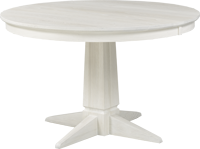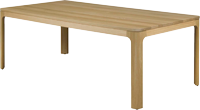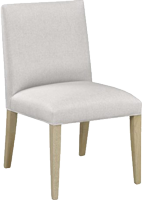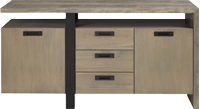Top Textures

Hand planed
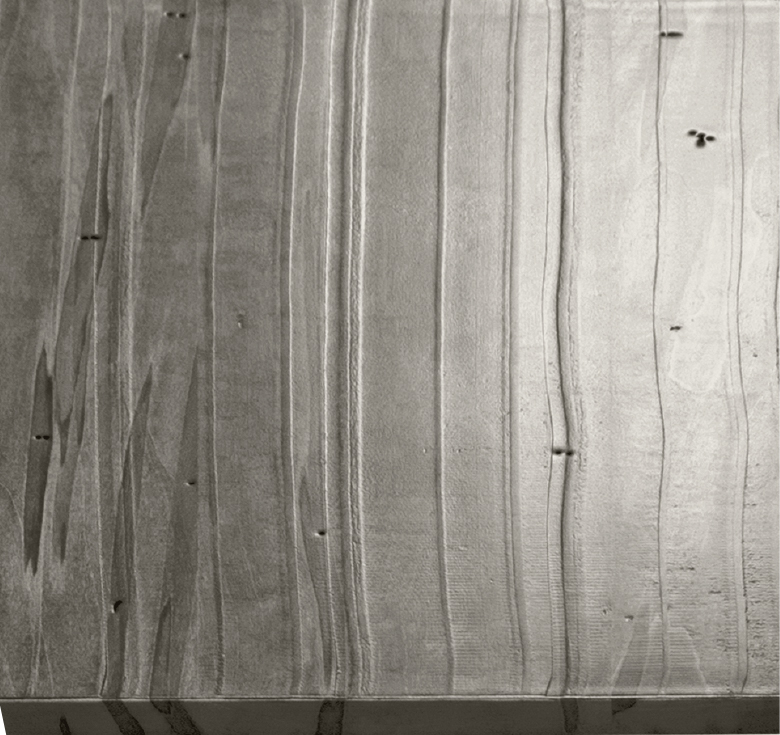
Hand Scraped

Random Planed
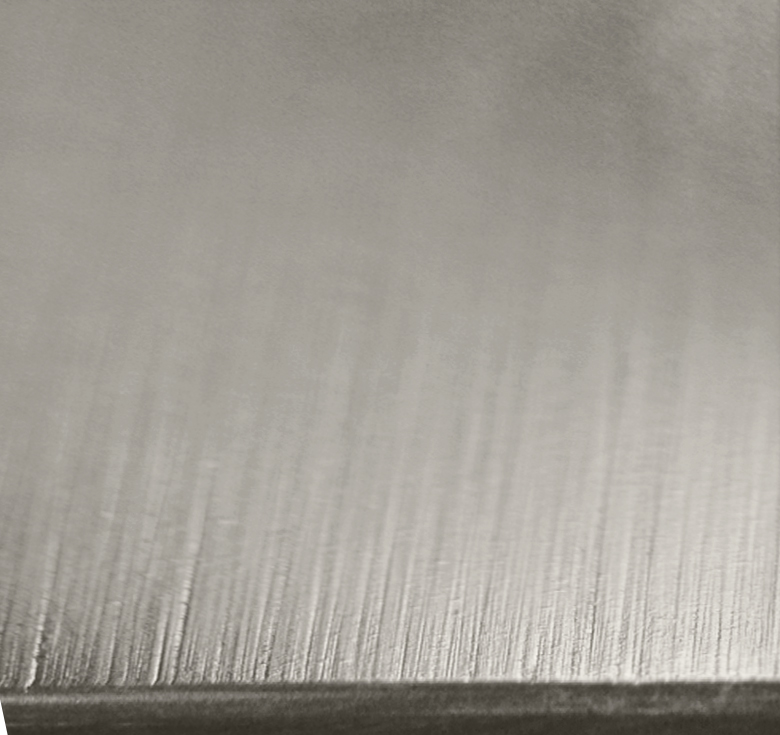
Brushed
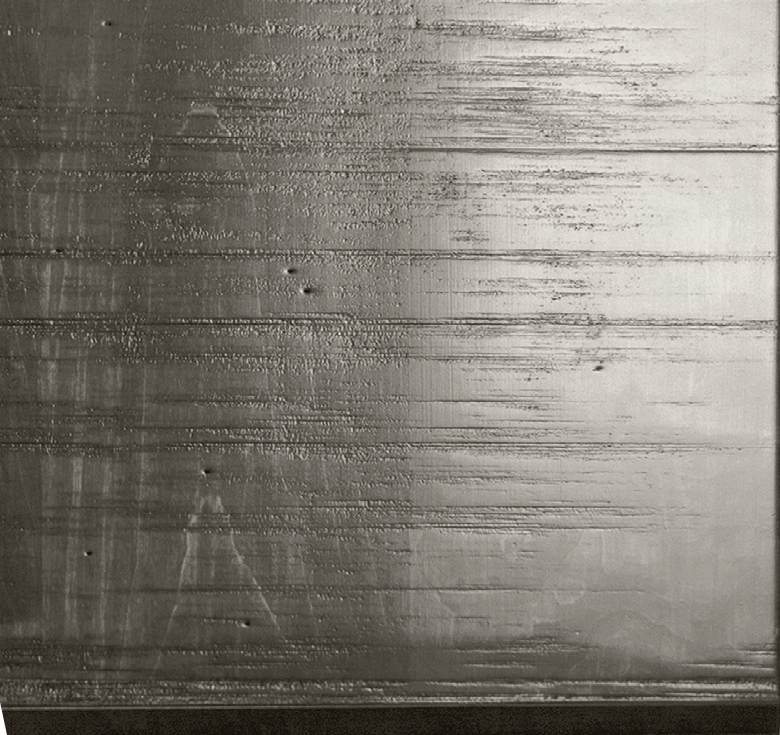
Ruff Cut

Saw Effect
Solid wood care & maintenance
With a little care and maintenance, solid wood furniture can retain its original beauty and durability for a lifetime. However, for this to be possible, we have outlined some of the measures that need to be taken.
Below are a few tips to maintain your solid wood furniture
- Maintain your environment at a rate of 40% – 50% relative humidity to prevent swelling, shrinking, warping and cracking
- Keep your furniture away from direct sunlight or heat sources such as forced air, fire places, and radiators
- Clean your furniture with water only, as solvents can damage the finish
- Do not place hot objects directly onto the surface of a table
Configurations
CENTRE EXTENSION CONFIGURATION
PROS
- Easy to extend and retract
- Lengthen or shorten your table easily as necessary to accommodate your guests
- Extra leaves can be stored inside the table top
CONS
- Leaf storage inside table may not accommodate all leaves—some leaves may need to be stored elsewhere
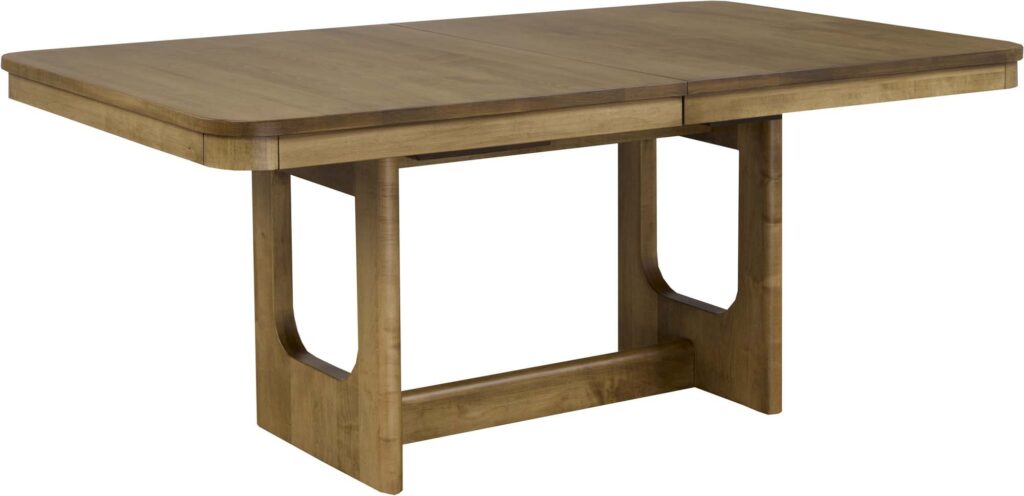
Solid top CONFIGURATION
Solid top configuration means the size of your table top always stays the same.
PROS
- Aesthetically pleasing, no table leaf joints—stunning impression left by large, smooth table top area
- No need to store extra leaves
CONS
- Table cannot be lengthened or shortened to accommodate various group sizes
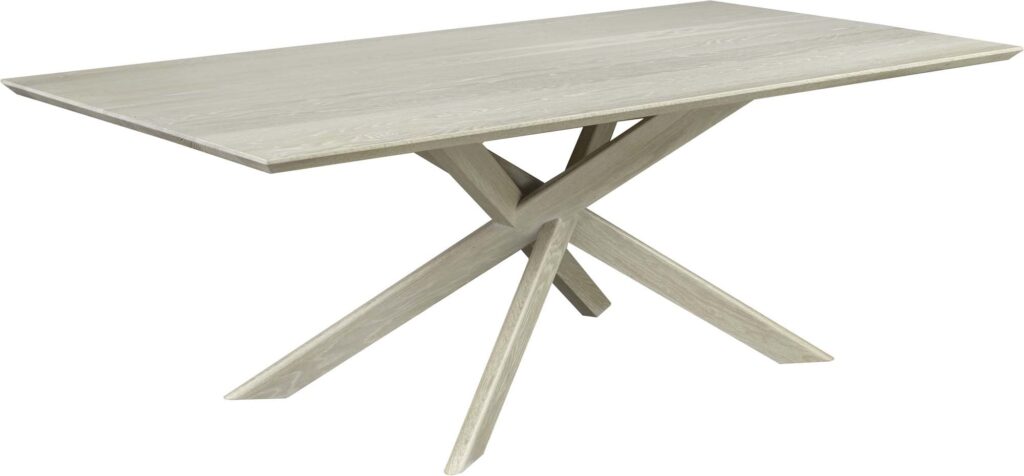
Solid top CONFIGURATION with end extension option
Solid top configuration with end extension option means your fixed length table can be lengthened if the need arises.
PROS
- Adds length to a fixed length table when needed
CONS
- End extensions cannot be stored in table—leaves need to be stored in closet area when not in use
- End extensions can be unwieldy to handle and store
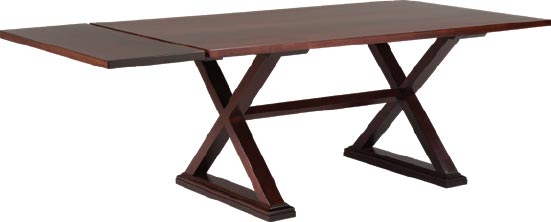
Features
Leaf Storage Constraints
Depending on the configuration of your table, it may accommodate up to 2 leaves stored beneath the top. This handy feature means you don’t need to worry about storing your leaves in a closet where they could accumulate scratches or dings.
Below are listed the terms of storage.
- No storage on single pedestal tables
- No storage on tables that are totally round or square when closed
- 36” width tables store 12” of extensions
- 42” width tables store 24” of extensions
- 42” wide stationary base tables with lengths longer than 84” plus two 12” extensions only store 12” of extensions
- 48” width tables store 24” of extensions
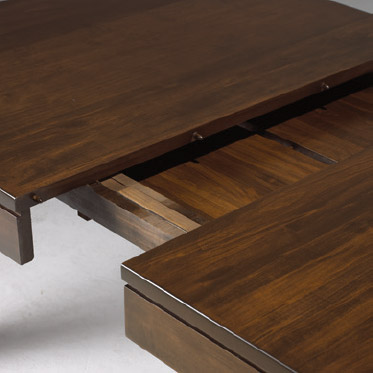
Table Top Grain Direction
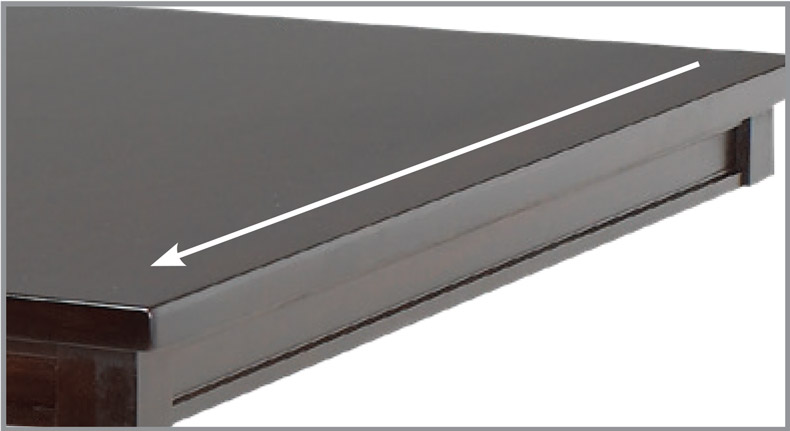
Centre Extension Configuration
Grain pattern travels from side to side, the width of the table
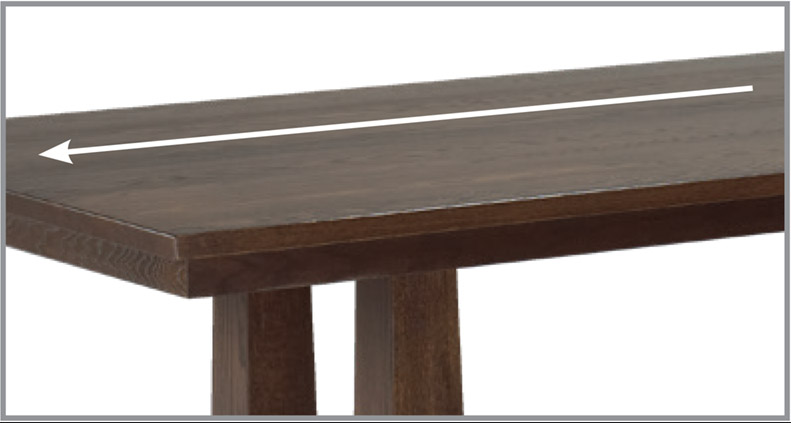
Solid Top Configuration
Grain pattern travels from end to end, the length of the table
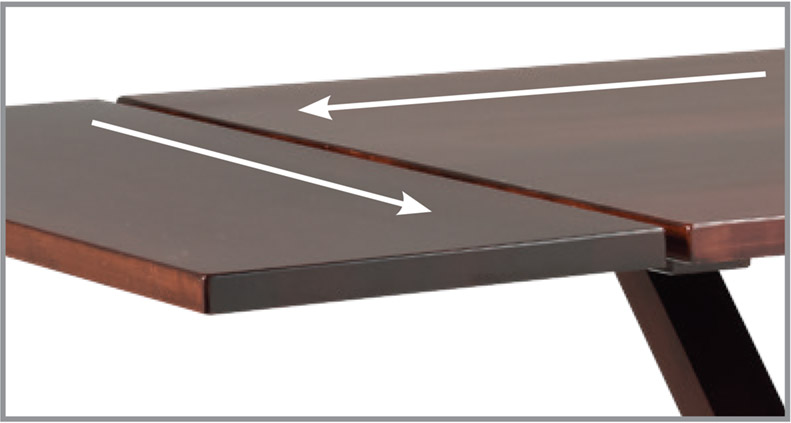
Solid Top with End Extension
On the main table section grain pattern travels
from end to end, the length of the table
On the end extensions grain travels from side to side, the width of the table.
Wood Types
White and Brown Soft Maple (SM and BSM)
Features: This is the normal maple species used in the industry. Although termed “soft” maple, this is a hardwood species. For comparison, it has the same hardness as cherry. It is a smooth, modern-looking wood with a tight grain for a clean, defined appearance.
Closed grain
Hardness: 950 (Janka Ball Scale)
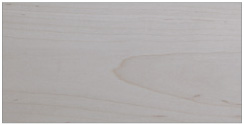
Features of SM
The “white” version of this wood is selected for light-coloured wood only, making it ideal for light stains.
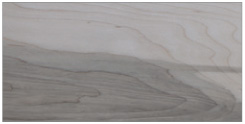
Features of BSM
The “brown” version of this wood has the knots removed but the darker heartwood remains. There will be a variegation between the grayish white sapwood and light to dark reddish-brown heartwood. If the stain colour is dark, this variegation in the wood colour is not noticeable.
White and Brown Hard Maple (HM and BHM)
Features: This denser wood will resist surface denting better compared to less dense woods. It is a smooth, modern-looking wood with a tight grain for a clean, defined appearance.
Closed grain
Hardness: 1450 (Janka Ball Scale)
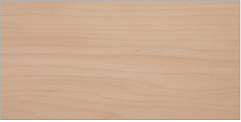
Features of HM
The “white” version of this wood is selected for light-coloured wood only, making it ideal for light stains.
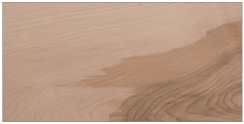
Features of BHM
The “brown” version of this wood has the knots removed but the darker heartwood remains. There will be a variegation between the grayish white sapwood and light to dark reddish-brown heartwood. If the stain colour is dark, this variegation in the wood colour is not noticeable.
Wormy Maple (WM)
Features: This is the same wood species as soft maple. Surrounding the beetle holes are darker coloured streaks contrasting with the grayish white sapwood. This exotic look results from the ambrosia beetle boring tunnels through the wood. The kiln-drying process ensures the lumber is free from insects.
Closed grain.
Hardness: 950 (Janka Ball Scale)
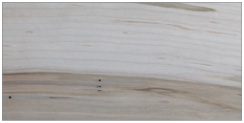
Red Oak and Quarter and Rift Sawn Red Oak (O and Q)
Features: The heartwood is a pinkish, reddish-brown while the sapwood is a light brown colour.
Open grain
Hardness: 1290 (Janka Ball Scale)
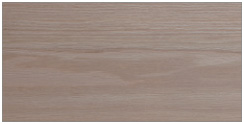
Features of O
This is the standard oak on our price list. The flat cut sawing results in a “cathedral” grain pattern.
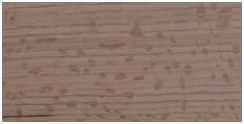
Features of Q
Quarter and Rift sawn oak results in a straight grain pattern. Our standard does not differentiate between quarter and rift sawn. Quarter sliced logs create a flake pattern overlaying the grain. Rift sliced logs have less of a flake pattern.
White Oak (FWO)
Features: White oak is a denser wood with tighter grain compared to red oak. Since white oak has no pink undertone, it is ideal for light and natural-coloured finishes. Our standard white oak is flat cut.
Open grain
Hardness: 1360 (Janka Ball Scale)
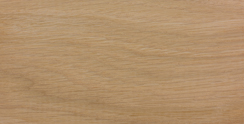
Cherry Premium and
Cherry Sappy
(C and CS)
Features: The rich reddish tone of cherry wood deepens with age and exposure. Cherry wood naturally contains brown pith marks
Closed grain
Hardness: 950 (Janka Ball Scale)
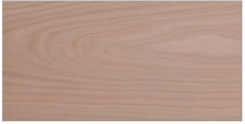
Features of C
The “premium” version of this wood is selected for the red heartwood only.
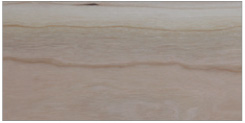
Features of CS
The “sappy” version of this wood is not sorted for colour. The mixture of red heartwood and white sapwood is not noticeable if the wood is finished in a dark colour.
Brown Maple (BSM) vs. White Maple (SM)
- Both wood types are the same species.
- Features of SM: The “white” version of this wood is selected for light-coloured wood only, making it ideal for light stains.
- Features of BSM: The “brown” version of this wood has the knots removed but the darker heartwood remains. There will be a variegation
between the grayish white sapwood and light to dark reddish-brown heartwood. If the stain colour is dark, this variegation in the wood
colour is barely noticeable. - Brown maple (BSM) is less expensive than white maple (SM) because there is less waste in the raw material.

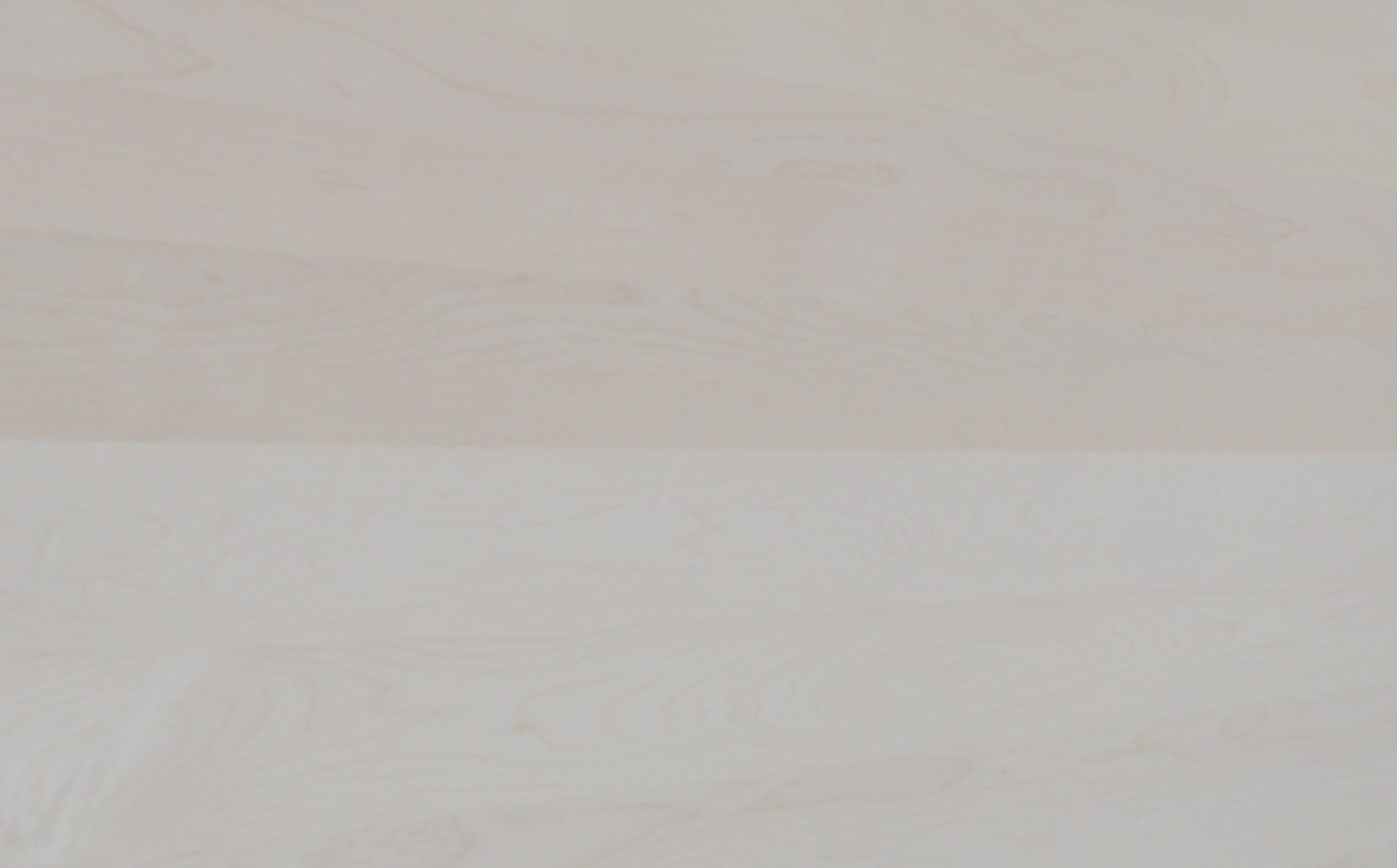
Edge Profiles
Changing edge profiles from what is shown on a style does not affect the cost.

COB Edge

Chamfer Edge

Cutback Edge

Gibbard Edge

Square Edge

New Moon Edge

#1 Edge

#2 Edge

#3 Edge

#4 Edge

#5 Edge
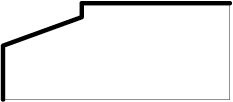
#6 Edge

#8 Edge
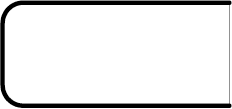
#9 Edge
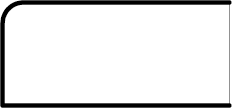
#10 Edge

#11 Edge

#12 Edge

Sharp Edge
Skirt Profiles
Changing skirt profiles from what is shown on a style does affect the cost.
4"
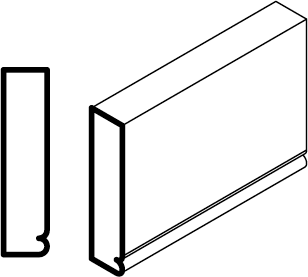
Beaded
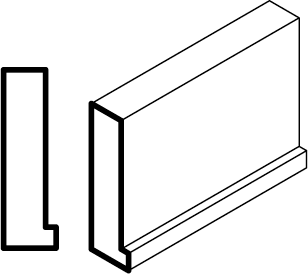
Bottom Notch
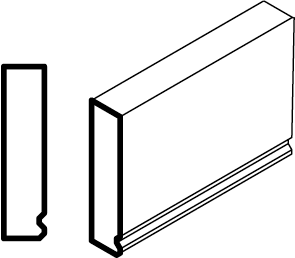
Chamfer
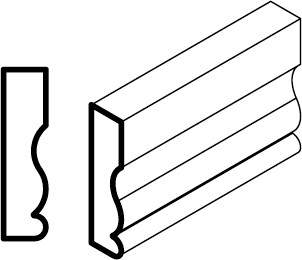
H-10
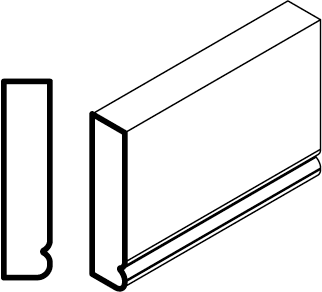
Large Bead
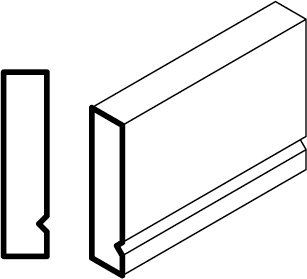
V Groove
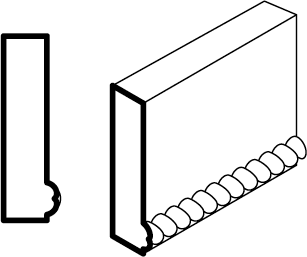
Plain Rope
2¼"
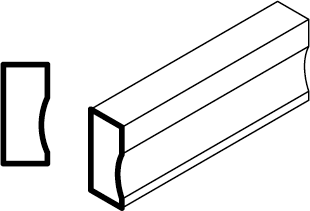
Ped Cove
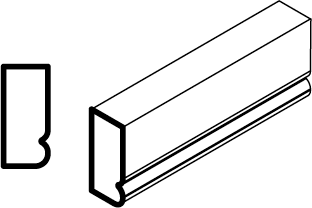
Large Bead
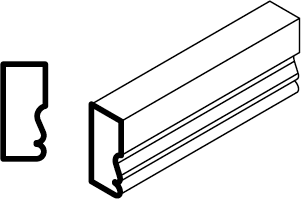
P-15
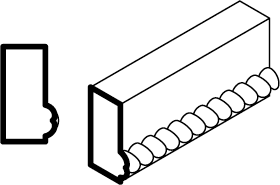
Plain Rope
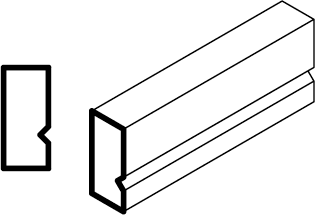
V Groove
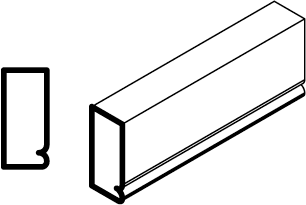
Beaded
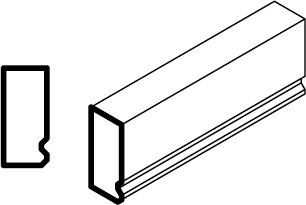
Chamfer
Table Legs
Changing table legs from what is shown on a style does affect the cost.

B29

BF29

C29

F29

RT29

S29

T29

TT29

TTF29
These legs are customizable on the Reesor table. Subtract the cost of the T29 leg as shown on the Reesor and add the cost of the desired leg.


